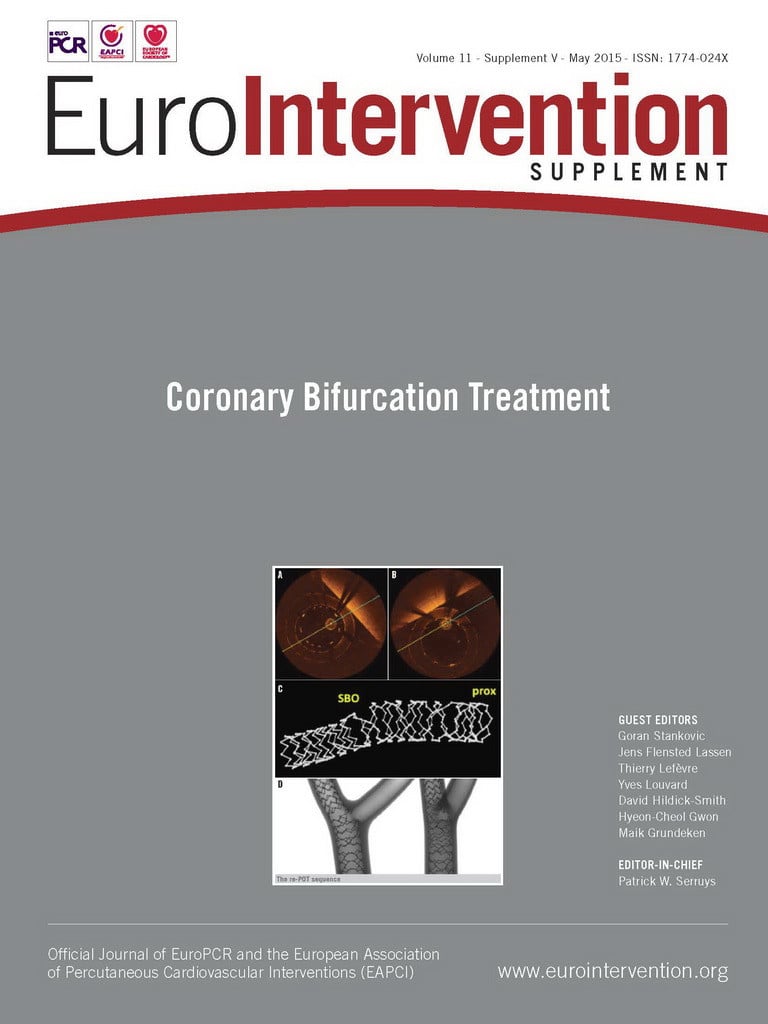This supplement of EuroIntervention dedicated to coronary bifurcation treatment is not only a fantastic and comprehensively detailed publication but also, in my opinion, shows us that the treatment of bifurcation lesions is still in some ways an art form.
Within this field, we have done our best to introduce a detailed foundation of bifurcation science with shear stress, biomechanics as well as the use of phantom and virtual models. However, those less well versed practitioners among us looking at these pages might conclude that, at the end of the day, the heart of the matter really is the decision whether to implant one stent or two stents. It is a testament to the Guest Editors that they have successfully answered this simplistic question by creating such a broad-ranging supplement, including many relevant topics from recognised experts from both the preclinical and clinical fields.
Of course, the bifurcation art form is a still a work in progress. I refer, in particular, to a truly successful, dedicated bifurcation stent. This is something we are still waiting for, as is witnessed by the sometimes disappointing adoption of dedicated devices in daily practice. In fact, my first experience with a dedicated bifurcation stent was in 1999, with the Bard XT Carina stent1. It had zigzag wire modules attached to it with a continuous spine design for stent flexibility. However, when in the obtuse margin or circumflex it was quite a challenge. Today, I think if we used this device in the left main it might be successful, as the left main is a larger vessel with proper orientation.
As an art form develops, its vocabulary usually evolves with age, serving as a useful tool for communication. We see bifurcation nomenclature such as provisional stenting, T and protrusion, culotte, crush, double crush, and so forth. For the unacquainted, these technical taxonomies are somewhat complex, but well addressed in this supplement. Personally, I feel discomfort with “provisional” as it implies that something is not final – in my early work I used the word “conditional”, although I must admit provisional is a word I have also used as well. I do not believe in a provisional result; rather, I believe in definite results. I believe, however, that we should describe provisional in the context of balloon angioplasty and not stenting.
When I reflected on this supplement, I remembered an old EuroIntervention editorial mentioning Robespierre’s Jacobin Club during the French Revolution with the implication that eventually clubs would fulfil their aims by solving the issues for which they were created and eventually ceasing to exist2. After 10 years, however, the European Bifurcation Club still exists, indicating that there is an ongoing, unmet need to consummate and perfect bifurcation treatments. The proof of this is the sheer volume of information within these pages.
Where lies the future for coronary bifurcation treatment?
It is my belief that there will be a dedicated device that will be very flexible, whose platform will be biodegradable and which will avoid being bulky. Some companies may find that bifurcations are a niche market, not justifying the investment; one could argue that this sentiment holds true also for all technological developments. We must nonetheless applaud the companies in this field who invest in progress. Benjamin Franklin characterised the importance of progress when he wrote that “without continual growth and progress, such words as improvement, achievement and success have no meaning.”

